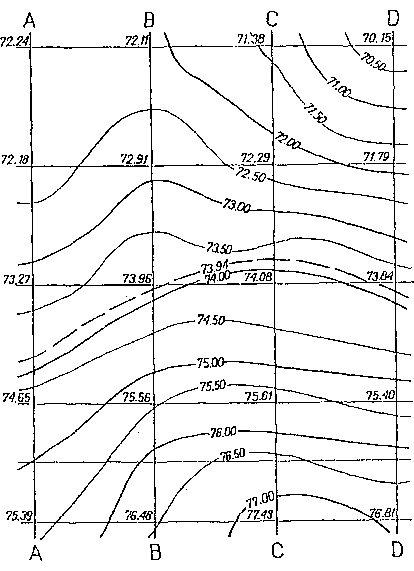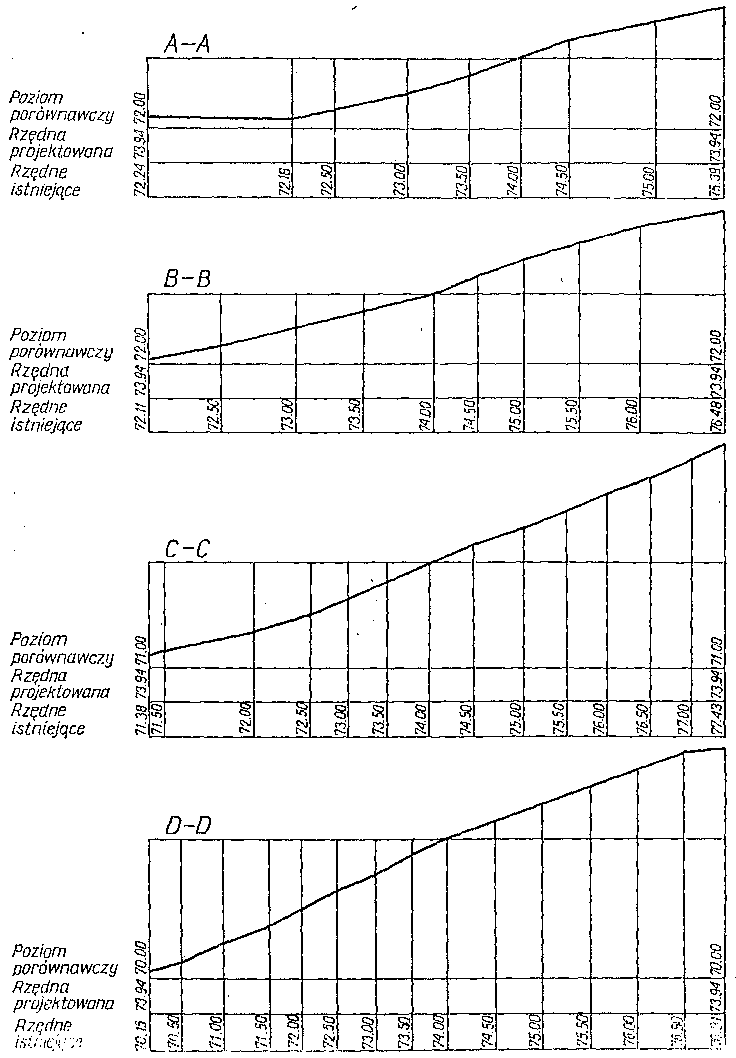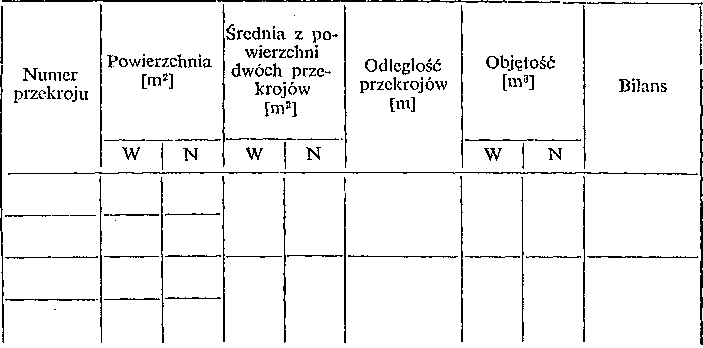Calculating the volume of earth masses by cross -sections is possible, If you have a technical and robot project, on which existing layers and designed layers are deleted. Calculation of this method is carried out in a sten, that on the set in characteristic places of earthworks is made at various intervals vertical cross -sections.
 Marking of cross -sections on a layer.
Marking of cross -sections on a layer.
Cross -section places must be parallel to each other. A double scale is usually used to remove cross -sections, np. height scale 1 : 10, and length 1 :100. When the cross -section is removed on a scale. There may be only excavations or embankments on the cross -section, or excavations and embankments at the same time. Avoid the location of two neighboring cross -sections, that there are only excavations on one of them, and on the neighboring embankments. In order to calculate the volume, the average from the sum of excavation or embankments on the neighboring (opposite) cross -sections, and then multiply through the distance of cross -sections according to the following formulas:
 in which: In - excavation cross -section, N - embankment cross -sectional surface, a - cross -section distance.
in which: In - excavation cross -section, N - embankment cross -sectional surface, a - cross -section distance.
After adding up the volume of masses occurring between successive cross -sections, the total volume of excavations and embankments is obtained.
The cross -sections are deleted by taking the comparative level under their foundation, from which the differences in existing and designed ordinates are measured on a certain scale.
 Cross -sections deleted on the basis of a layer plan from the drawing.
Cross -sections deleted on the basis of a layer plan from the drawing.
The comparative level is a plane below the lowest area of the area or the lowest point of the designed excavation.
For the convenience of calculating, the comparative level should have a row with a full number of meters. On the deleted cross -section showing the existing and designed surface line, that is, the level, I enter the ordinary level of the comparative level, existing and designed ordinates.
Cross -section surfaces can be calculated in three ways:
- by calculating the surface of the resulting geometric figures;
— przez sumowanie długości pasków określonej szerokości za pomocą przenośnika;
— za pomocą planimetru.
The most convenient and therefore the most widespread way using the conveyor is. This calculation is followed as follows. The cross -section surface is covered with a piece of tracing paper with a parallel line deleted at intervals 1 m (on the same scale, in which the cross -section is made). Adding up by parting the conveyor length of strips covering the cross -sectional surface, The number m² is read on the division after the partitioned conveyor adapts to it. Calculation results are entered in the table prepared according to the following formula.
 Calculating volume described by the method is made in designing changes in the shape of large areas with not very varied existing or designed terrain and with large changes in heights.
Calculating volume described by the method is made in designing changes in the shape of large areas with not very varied existing or designed terrain and with large changes in heights.